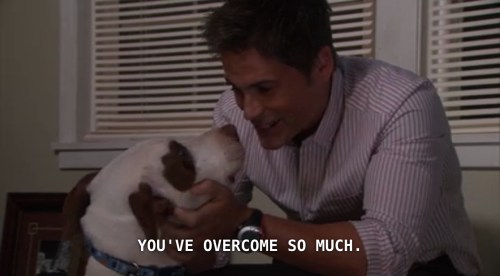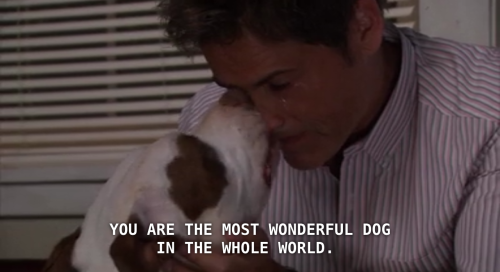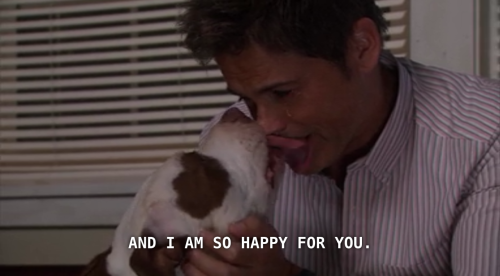Cptsd-blogger - Sideblog Vent

More Posts from Cptsd-blogger and Others
I suspect quite a few people on this site don’t realize they are struggling with the effects of chronic trauma. In particular I think more people need to learn about the symptoms of C-PTSD.
Distinct from general PTSD, Complex PTSD is caused by prolonged, recurring stress and trauma, often occurring in childhood & adolescence over an extended period of time. There are many risk factors, including: abusive/negligent caregivers, dysfunctional family life, untreated mental/chronic illness, and being the target of bullying/social alienation.
I’m not a mental health professional and I’m not qualified to diagnose anyone, I just remember a million watt light bulb going off in my head when I first learned about C-PTSD. It was a huge OH MY FUCKING WORD eureka moment for me—it explained all these problems I was confused and angry at myself for having. The symptoms that really stood out to me were:
Negative self-perception: deep-seated feelings of shame, guilt, worthlessness, helplessness, and stigma. Feeling like you are different from everyone else, like something is fundamentally ‘bad’ or ‘wrong’ with you.
Emotional avoidance of topics, people, relationships, activities, places, things etc that might cause uncomfortable emotions such as shame, fear, or sadness. Can lead to self-isolation.
Learned helplessness: a pervasive sense of powerlessness, often combined with feelings of desensitization, wherein you gradually stop trying to escape or prevent your own suffering, even when opportunities exist. May manifest as self-neglect or self-sabotage. (I remember watching myself make bad choices and neglect my responsibilities, and having no idea why I was doing it, or how to stop myself. Eventually I just stopped caring, which led to more self-neglect.)
Keep reading




“I always marvel at the humans’ ability to keep going. They always manage to stagger on even with tears streaming down their faces.”
—
how the fuck did i turn into this.

How Grounding Works:
Grounding techniques often use the five senses—sound, touch, smell, taste, and sight—to immediately connect you with the here and now. For example, singing a song, rubbing lotion on your hands, or sucking on some sour candy are all grounding techniques that produce sensations that are difficult to ignore or distract you from what’s going on in your mind.
This helps you directly and instantaneously connect with the present moment. At the same time, grounding reduces the likelihood that you will slip into a flashback or dissociation.
Grounding is highly personal. What may work for one person may trigger anxiety or flashbacks in another. You may need to do some trial and error before you figure out what grounding techniques work best for you. Pay attention to the coping mechanisms you’ve already developed to help you get through flashbacks and anxiety and see if you can build on them and/or use them as grounding techniques.
Grounding Techniques
To connect with the here and now, do something (or several things) that will bring all your attention to the present moment. Be sure to keep your eyes open while you’re grounding yourself so you’re aware of everything that’s going on around you.
If you notice that you’re slipping into a flashback or a dissociative state, try some of these grounding techniques.
Sight
Complete a crossword puzzle, sudoku, word search, or other puzzles.
Count all the pieces of furniture around you.
Play a distracting game on your tablet, computer, or smartphone.
Put on your favorite movie or TV show.
Read a book or magazine.
Take a mental inventory of everything around you, such as all the colors and patterns you see, the sounds you hear, and the scents you smell. Saying this out loud is helpful too.
Smell
Get some essential oils that remind you of good times (freshly cut grass, rain, clean laundry, or sugar cookies, for example) and smell one.
Light a scented candle or melt scented wax.
Sniff strong peppermint, which also has the benefit of having a soothing effect.3
Sound
Call a loved one.
Put on some nature sounds such as birds chirping or waves crashing.
Read out loud, whether it’s a favorite children’s book, a blog article, or the latest novel.
Talk out loud about what you see, hear, or what you’re thinking or doing.4
Turn up the radio or blast your favorite song.
Taste
Bite into a lemon or lime.
Let a piece of chocolate melt in your mouth, noticing how it tastes and feels as you roll it around with your tongue.
Suck on a mint or chew peppermint or cinnamon gum.
Take a bite of pepper or some hot salsa.
Touch
Cuddle and pet your dog or cat if you have one.
Drink a hot or cold beverage.
Grab an article of clothing, a blanket, or a towel and knead it in your hands or hold it to your cheek. Concentrate on what it feels like.
Hold an ice cube and let it melt in your hand.
Massage your temples.
Pop some bubble wrap.
Put your hands under running water.4
Rub your hand lightly over the carpet or a piece of furniture, noting the texture.
Take a hot or cool shower.
Other
Dance.
Go for a walk or run.
Send a letter or card to someone you care about.
Sit in another room or area for a change of scenery.
Stretch your arms, neck, and legs.
Take 10 slow, deep breaths.
Write in a journal about how you’re feeling or keep a list of prompts handy that you can use to decide what to write about.
Grounding Can Be Done Anywhere
The nice thing about using grounding as a coping technique is that many of these techniques can be done in any environment.5 You might be home alone or out in public, but once you feel that flashback or dissociation coming on, you can use grounding to move your focus back to the present.
Working on grounding takes dedication and it becomes easier over time. If these particular grounding techniques don’t work for you, try something else. For example, some people find that a rubber band on their wrist is useful to snap them back to the moment. The ultimate goal is to live in the now and focus on the present when the past starts coming up.
source

-
 dismembereddream liked this · 3 weeks ago
dismembereddream liked this · 3 weeks ago -
 only-layers-of-skin-hiding-bones reblogged this · 3 weeks ago
only-layers-of-skin-hiding-bones reblogged this · 3 weeks ago -
 fleshmess liked this · 4 weeks ago
fleshmess liked this · 4 weeks ago -
 ghettogothgoblin reblogged this · 1 month ago
ghettogothgoblin reblogged this · 1 month ago -
 stitchedbunnyyy reblogged this · 1 month ago
stitchedbunnyyy reblogged this · 1 month ago -
 nyxinpark reblogged this · 1 month ago
nyxinpark reblogged this · 1 month ago -
 rageful-x liked this · 1 month ago
rageful-x liked this · 1 month ago -
 endureandsurvives liked this · 1 month ago
endureandsurvives liked this · 1 month ago -
 r1k11 liked this · 1 month ago
r1k11 liked this · 1 month ago -
 addictt-with-a-pen reblogged this · 1 month ago
addictt-with-a-pen reblogged this · 1 month ago -
 deadgrlfromars liked this · 1 month ago
deadgrlfromars liked this · 1 month ago -
 xmnuuuu liked this · 1 month ago
xmnuuuu liked this · 1 month ago -
 crazycherub liked this · 1 month ago
crazycherub liked this · 1 month ago -
 bruiisedfawn liked this · 1 month ago
bruiisedfawn liked this · 1 month ago -
 juuzou-suzuyaaa reblogged this · 1 month ago
juuzou-suzuyaaa reblogged this · 1 month ago -
 juuzou-suzuyaaa liked this · 1 month ago
juuzou-suzuyaaa liked this · 1 month ago -
 238117901415 reblogged this · 1 month ago
238117901415 reblogged this · 1 month ago -
 babybunnywings reblogged this · 1 month ago
babybunnywings reblogged this · 1 month ago -
 babybunnywings liked this · 1 month ago
babybunnywings liked this · 1 month ago -
 nocturnalr4ven liked this · 1 month ago
nocturnalr4ven liked this · 1 month ago -
 fashionablyuninvitedx liked this · 1 month ago
fashionablyuninvitedx liked this · 1 month ago -
 d0llkiss liked this · 1 month ago
d0llkiss liked this · 1 month ago -
 only-layers-of-skin-hiding-bones liked this · 1 month ago
only-layers-of-skin-hiding-bones liked this · 1 month ago -
 strawberrrydread reblogged this · 1 month ago
strawberrrydread reblogged this · 1 month ago -
 angie-fluffy-boots reblogged this · 1 month ago
angie-fluffy-boots reblogged this · 1 month ago -
 xxangeldustanalogx reblogged this · 1 month ago
xxangeldustanalogx reblogged this · 1 month ago -
 m6lancholiaa liked this · 1 month ago
m6lancholiaa liked this · 1 month ago -
 anjels liked this · 2 months ago
anjels liked this · 2 months ago -
 bpd-slut reblogged this · 3 months ago
bpd-slut reblogged this · 3 months ago -
 trxuma-system reblogged this · 3 months ago
trxuma-system reblogged this · 3 months ago -
 soniciselectricc liked this · 9 months ago
soniciselectricc liked this · 9 months ago -
 softlikerein reblogged this · 10 months ago
softlikerein reblogged this · 10 months ago -
 sillylittleguy2 liked this · 1 year ago
sillylittleguy2 liked this · 1 year ago -
 cemeteryvomit reblogged this · 1 year ago
cemeteryvomit reblogged this · 1 year ago -
 rejectedbat liked this · 1 year ago
rejectedbat liked this · 1 year ago



